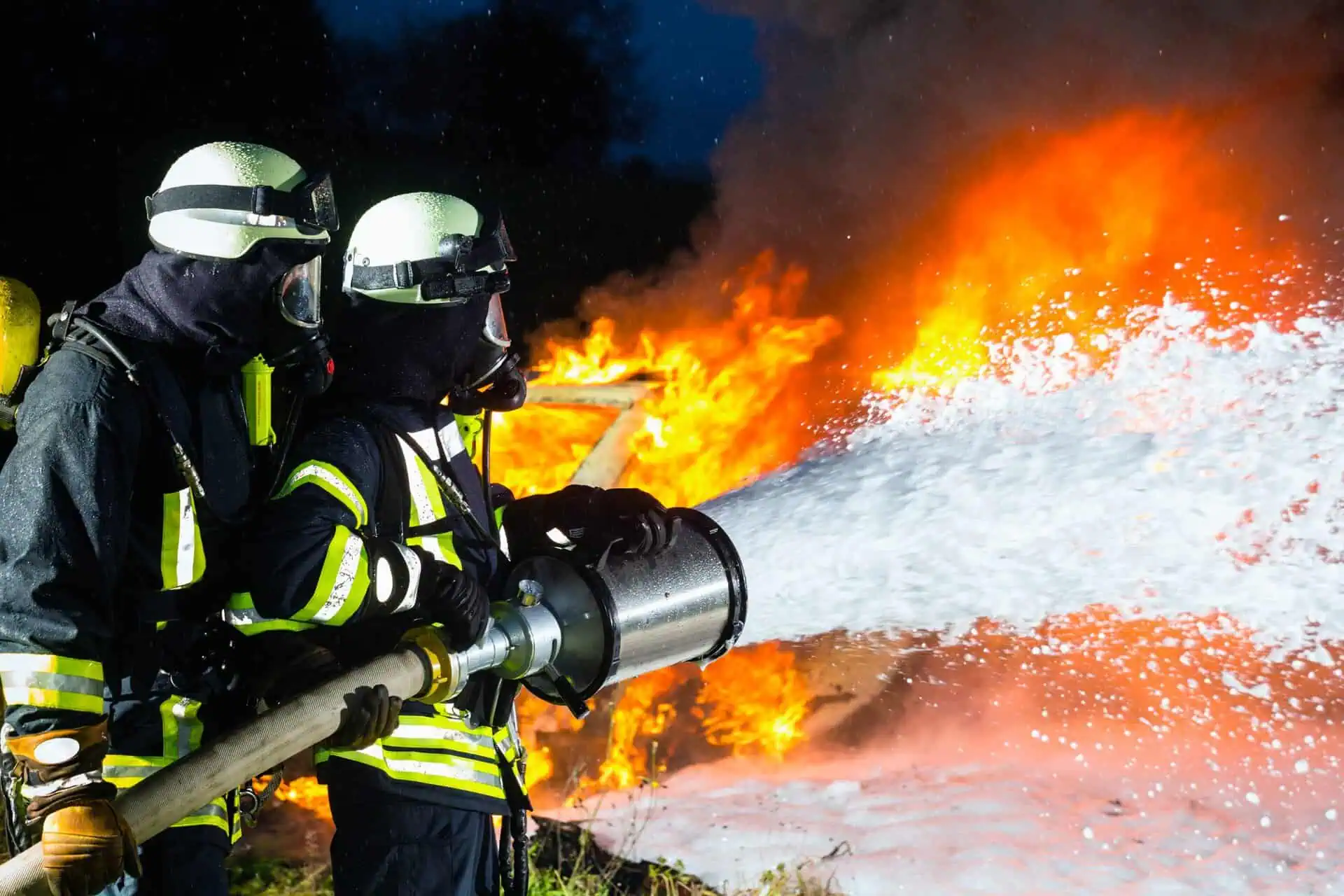AFFF Ulcerative Colitis Lawsuit
- Last Updated: June 12th, 2025

Attorney Jessica Paluch-Hoerman, founder of TruLaw, has over 28 years of experience as a personal injury and mass tort attorney, and previously worked as an international tax attorney at Deloitte. Jessie collaborates with attorneys nationwide — enabling her to share reliable, up-to-date legal information with our readers.
Legally Reviewed
This article has been written and reviewed for legal accuracy and clarity by the team of writers and legal experts at TruLaw and is as accurate as possible. This content should not be taken as legal advice from an attorney. If you would like to learn more about our owner and experienced injury lawyer, Jessie Paluch, you can do so here.
Fact-Checked
TruLaw does everything possible to make sure the information in this article is up to date and accurate. If you need specific legal advice about your case, contact us by using the chat on the bottom of this page. This article should not be taken as advice from an attorney.
Key takeaways:
- AFFF, or firefighting foam, contains PFAS chemicals that may cause ulcerative colitis and other health issues.
- Individuals who have been exposed to AFFF and developed ulcerative colitis can file lawsuits seeking compensation for medical expenses and other damages.
- Lawsuits claim that manufacturers knew about the risks of PFAS in AFFF but did not adequately warn users.
Overview of AFFF Ulcerative Colitis Lawsuit
On this page, we’ll provide an overview of the AFFF Ulcerative Colitis Lawsuit, the link between AFFF firefighting foam and ulcerative colitis, how to file an AFFF Lawsuit, and much more.
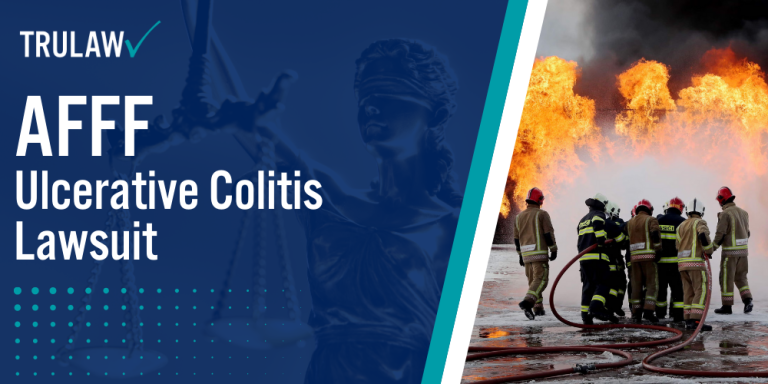
Intro to the AFFF Ulcerative Colitis Lawsuits
Aqueous Film Forming Foam (AFFF) has been used to fight fires fueled by liquids and gases since the 1960s.
Unfortunately, many AFFF products contain PFAS chemicals, commonly referred to as “forever chemicals,” which have been linked to a range of health concerns, including ulcerative colitis and cancer.
AFFF lawsuits are being filed nationwide by individuals who have suffered from ulcerative colitis and other health issues related to AFFF exposure.
If you or a loved one has been diagnosed with ulcerative colitis, cancer, or any related health problems, you may qualify to file an AFFF Firefighting Foam Lawsuit.
You can use the chatbot on this page to see if you qualify to file an AFFF lawsuit instantly.
TruLaw is ready to assist with any questions about potential claims related to AFFF exposure.
Table of Contents
Link Between Aqueous Film-Forming Foam (AFFF) and Ulcerative Colitis
AFFF contains per- and poly-fluoroalkyl substances (PFAS), chemicals that persist in the environment and accumulate in the human body.
Research has indicated a potential link between exposure to these chemicals and health issues like ulcerative colitis, a chronic inflammatory bowel disease.
Ulcerative colitis, which involves inflammation and ulcers in the lining of the colon and rectum, can have a profound impact on an individual’s quality of life.
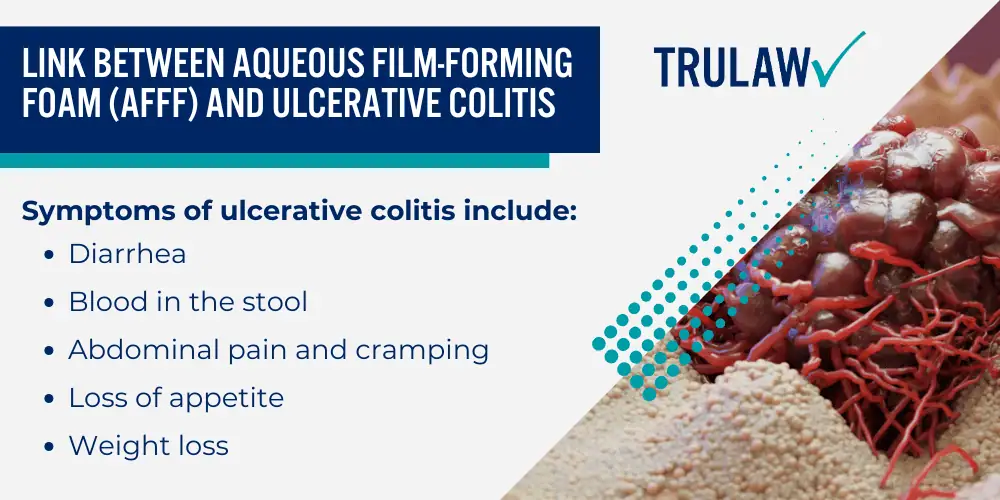
Symptoms of ulcerative colitis include:
- Diarrhea
- Blood in the stool
- Abdominal pain and cramping
- Loss of appetite
- Weight loss
The condition can lead to complications such as colon cancer, blood clots, infections, and kidney stones.
Studies connecting PFAS exposure to ulcerative colitis include:
- A 2018 study published in the Journal of Environmental Research identified a strong association between long-term PFOA exposure and the risk of developing ulcerative colitis.
- A 2020 study published in the Journal of Crohn’s and Colitis linked elevated PFAS levels with a higher risk of developing ulcerative colitis later in life.
The risk of ulcerative colitis increases with exposure to AFFF, and improper disposal of the foam can result in contamination of soil, air, and water.
PFAS Chemicals in Firefighting Foam and Their Impact on Health
Manufacturers of firefighting foam, along with the U.S. Navy, have been aware of the risks associated with AFFF for decades.
Various studies have linked PFAS chemicals to an array of health concerns, from cancer to autoimmune diseases like ulcerative colitis.
Key studies connecting AFFF exposure to health problems include:
- A study from the National Research Centre for Environmental Toxicology in Australia found that firefighters have higher levels of PFAS in their bloodstream.
- The International Journal of Cancer published a study linking PFOS exposure to breast cancer.
- Research by the University of California, Berkeley indicated higher PFAS levels in women firefighters compared to office workers.
- A study in the Journal of the American Medical Association found a connection between PFOA exposure and an increased risk of ulcerative colitis, kidney cancer, and testicular cancer.
- The International Agency for Research on Cancer (IARC) classified PFOA as possibly carcinogenic, and PFOS as potentially harmful to humans.
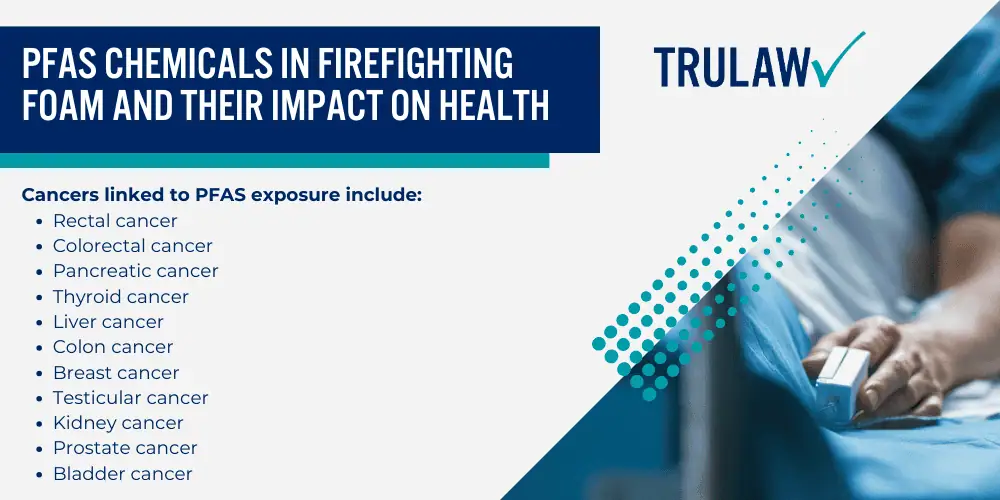
Cancers linked to PFAS exposure include:
- Rectal cancer
- Colorectal cancer
- Pancreatic cancer
- Thyroid cancer
- Liver cancer
- Colon cancer
- Breast cancer
- Testicular cancer
- Kidney cancer
- Prostate cancer
- Bladder cancer
Other health issues associated with PFAS exposure include:
- Decreased vaccine response in children
- Increased risk of high blood pressure or pre-eclampsia in pregnant women
- Changes in liver enzymes
- Small decreases in infant birth weights
- Increased cholesterol levels
The potential health impacts of PFAS exposure continue to raise serious concerns, particularly for individuals who have worked with or around AFFF firefighting foam for long periods of time (such as civilian firefighters and military firefighters).
What is the AFFF Firefighting Foam MDL?
The AFFF lawsuit involves legal action taken by individuals who have suffered health issues due to exposure to Aqueous Film Forming Foam (AFFF).
This includes conditions like ulcerative colitis and other serious health concerns.
These firefighting foam cancer lawsuits aim to seek compensation for medical expenses, pain and suffering, lost wages, and other damages linked to AFFF exposure.
As part of the coordinated pretrial process, nearly 6,000 AFFF lawsuits have been consolidated into multidistrict litigation (MDL 2873).
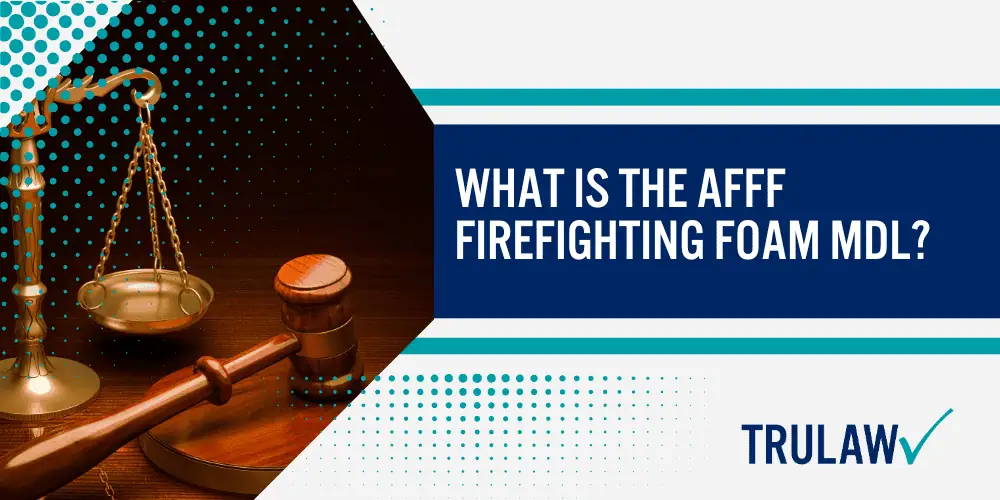
This MDL is overseen by U.S. District Judge Richard M. Gergel in the District of South Carolina.
By consolidating the cases, plaintiffs can share resources, coordinate evidence, and work together to present a stronger case against the defendants.
The plaintiffs claim that the companies responsible for manufacturing AFFF were aware of its potential toxicity but continued to market it without providing adequate warnings or taking steps to minimize exposure risks.
Defendants in AFFF Firefighting Foam Litigation
The AFFF firefighting foam lawsuits name various manufacturers and distributors of AFFF as defendants.
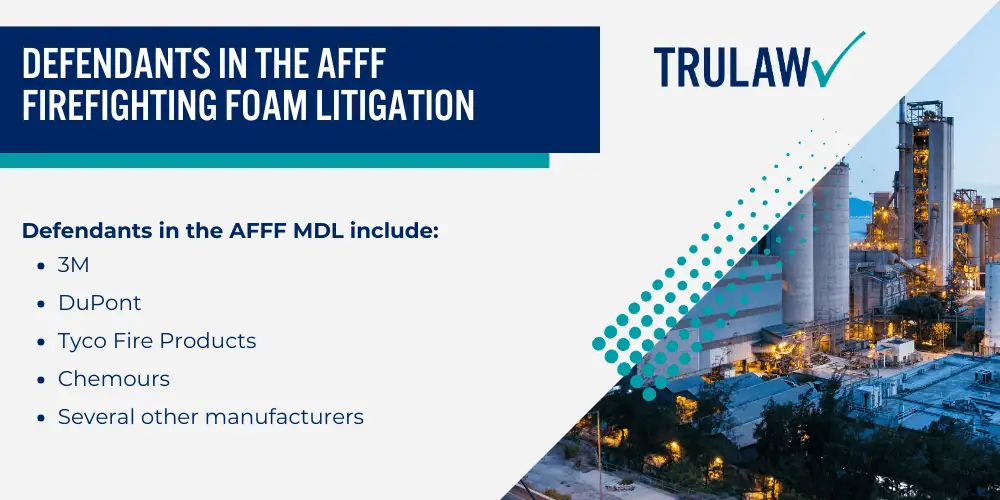
Defendants in the AFFF MDL include:
- 3M
- DuPont
- Tyco Fire Products
- Chemours
- Several other manufacturers
Plaintiffs argue that these companies failed to properly warn users about the health risks associated with their AFFF firefighting foam products, despite knowledge of potential harm.
What is the Average Settlement for AFFF Firefighting Foam Lawsuits?
The AFFF litigation is ongoing, and settlements have yet to be reached in cases filed by individuals.
Successful lawsuits typically present detailed information on exposure to firefighting foam, along with medical records and documentation to support the claim.
Although no settlements have been finalized, legal experts estimate that potential settlement amounts for AFFF lawsuits may range from $20,000 to $600,000 (or more).
These projections are based on prior mass tort cases involving cancer diagnoses but should not be viewed as guaranteed outcomes.
These figures depend heavily on the strength of the individual case, medical evidence, and other unique factors.
AFFF Lawsuit Settlement Figures for Municipalities
In a separate case, 3M, one of the largest AFFF manufacturers, agreed to pay at least $10.3 billion to settle claims related to municipal water contamination cases, where water had been contaminated by PFAS chemicals.
This settlement aims to help clean up PFAS pollution in public water systems across the country.
However, this settlement is distinct from the individual lawsuits related to health impacts.
It’s important to note that TruLaw is only accepting clients with AFFF personal injury claims — we are not accepting clients for the AFFF municipal water contamination lawsuits.
How to File an AFFF Ulcerative Colitis Lawsuit
If you or a loved one has been diagnosed with ulcerative colitis or another health condition potentially linked to AFFF exposure, exploring your legal options may be a step toward seeking compensation for related damages.
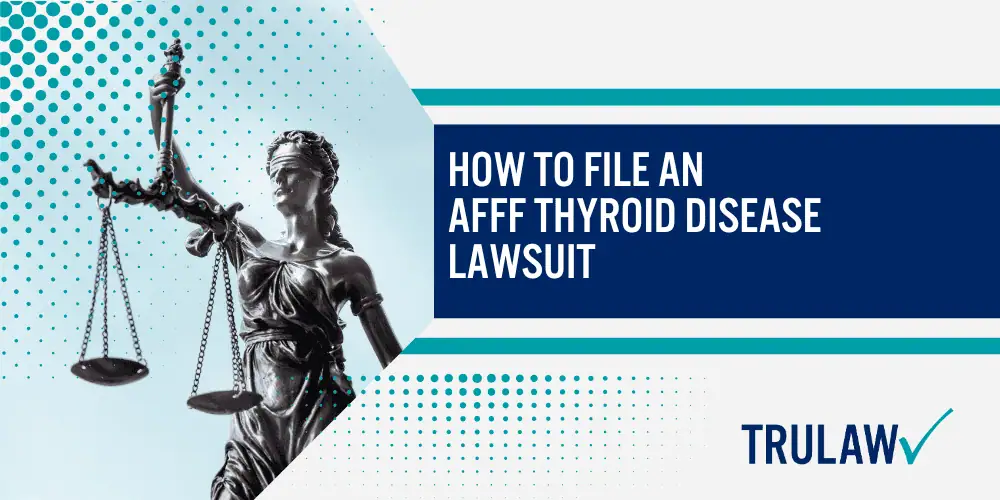
Working with AFFF lawyers who have experience with chemical exposure cases like this can provide valuable insight into your eligibility and help you determine the best course of action.
The firefighting foam attorneys at TruLaw and our partner law firms are here to review your case, guide you through the legal process, and ensure your rights are protected as you move forward.
Collecting Evidence for AFFF Lawsuits
Building a strong case requires gathering key pieces of evidence that establish the link between your exposure to AFFF and the health problems that followed.
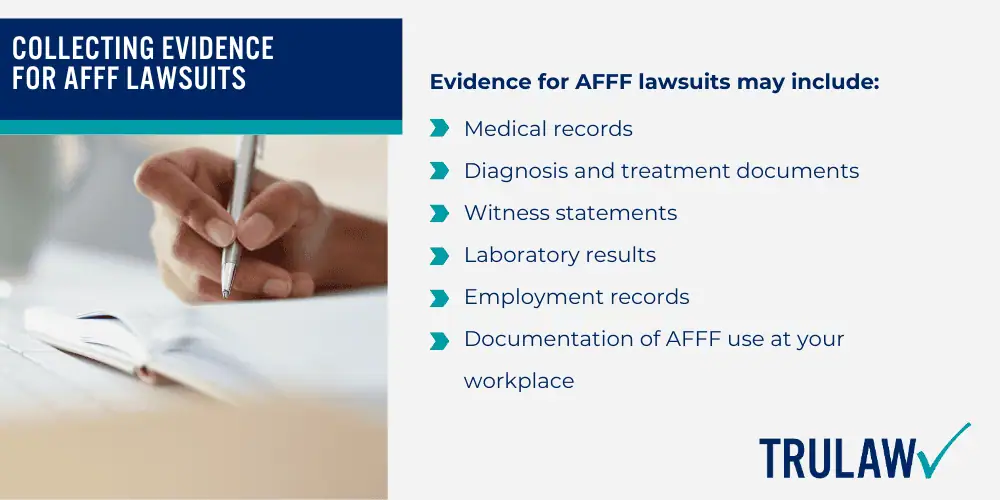
Evidence for AFFF lawsuits may include:
- Medical records
- Diagnosis and treatment documents
- Witness statements
- Laboratory results
- Employment records
- Documentation of AFFF use at your workplace
We can assist you in collecting and organizing this evidence to strengthen your case, as well as answer any questions you may have about the legal process and what it involves.
Compensation in Firefighting Foam Lawsuits
When pursuing a lawsuit, it’s important to assess the full extent of the damages you’ve suffered due to AFFF exposure.
Damages refer to both the financial and emotional losses experienced as a result of your health condition.
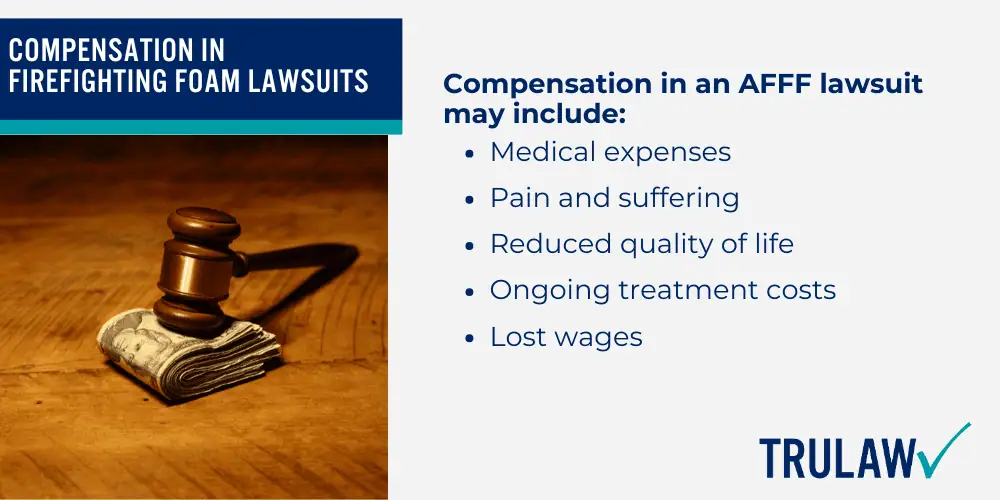
Compensation in an AFFF lawsuit may include:
- Medical expenses
- Pain and suffering
- Reduced quality of life
- Ongoing treatment costs
- Lost wages
TruLaw can help accurately assess these damages and develop a clear strategy to seek appropriate compensation.
The Importance of Experienced Attorneys in AFFF Lawsuits
By working with experienced legal professionals who specialize in chemical exposure and environmental contamination lawsuits similar to the AFFF litigation, you can be confident that your case is in good hands.
The firefighting foam attorneys at TruLaw and our partner firms are prepared to provide the support and advocacy you need to file your AFFF Lawsuit — aiming to recover the damages you’ve endured due to the negligence of AFFF manufacturers.
TruLaw: Your Firefighting Foam Cancer Law Firm
AFFF lawsuits are being filed against AFFF manufacturers for the harmful effects of exposure to firefighting foam containing toxic chemicals.
Individuals who have been exposed to AFFF may face an increased risk of developing serious health conditions such as cancer, thyroid disease, ulcerative colitis, kidney disease, and more.
The firefighting foam lawyers at TruLaw and our partner law firms are working to hold AFFF manufacturers accountable for the damage caused by these dangerous chemicals and help those affected explore their legal options.
If you or a loved one has developed cancer or other health issues following regular exposure to toxic firefighting foam, you may qualify to file an AFFF lawsuit and seek financial compensation.
Contact us today for a free consultation to learn more about your legal options by using the chatbot on this page to instantly check if you qualify to file an AFFF lawsuit.
We are available to answer any questions you may have about AFFF firefighting foam cases, the health risks associated with AFFF exposure, and how we can assist you.
We’re here to provide the support you need.
AFFF Lawsuit Frequently Asked Questions
-
If you suspect that your ulcerative colitis or other health conditions may be linked to AFFF exposure, it’s important to consult with a medical professional for an accurate diagnosis.
You can reach out to the firefighting foam lawyers at TruLaw and our partner law firms for a free consultation to discuss whether you may be eligible to file an AFFF lawsuit.
You can do so by using the chat on this page for an instant case evaluation to quickly determine if you qualify for an AFFF lawsuit.
-
No, there is no AFFF class action lawsuit.
AFFF firefighting foam lawsuits are being managed through multidistrict litigation (MDL).
The AFFF MDL consolidates all related lawsuits into one federal court to streamline the legal process and ensure consistency in decision-making across cases.
MDLs differ from class actions in that plaintiffs maintain their individual claims.
In an MDL settlement, compensation is determined based on the facts and circumstances specific to each case, whereas in a class action, compensation is divided equally among all claimants, regardless of their individual situations.
Some law firms may incorrectly refer to the “AFFF Class Action Lawsuit” or “AFFF Class Action MDL,” but these terms are inaccurate.
-
Current and pending AFFF lawsuits have been consolidated into a multidistrict litigation (MDL).
MDL is a way for federal courts to handle major lawsuits more efficiently by grouping similar cases together — allowing for consistent rulings and faster resolutions.
The original lawsuits do not need to be filed in the same state to be included in an MDL.
The cases are pulled from multiple federal districts and centralized in one court, which oversees discovery and other pretrial procedures.
This process reduces costs and resources while ensuring fairness and consistency across similar cases.
-
There have been no settlements in the AFFF litigation so far.
However, attorneys estimate that AFFF lawsuit settlement amounts could range from $20,000 to $600,000 (or more), depending on the strength of the case and other unique factors.
These estimates are not guarantees of compensation but are projections based on previous mass tort cases involving similar health risks, such as cancer.
For more insight into what to expect in your specific case, it’s best to consult with an attorney familiar with the AFFF litigation.
You can use the chat on this page for an instant case evaluation to determine if you qualify to file an AFFF cancer lawsuit and what damages you may be entitled to.

Managing Attorney & Owner
With over 25 years of legal experience, Jessica Paluch-Hoerman is an Illinois lawyer, a CPA, and a mother of three. She spent the first decade of her career working as an international tax attorney at Deloitte.
In 2009, Jessie co-founded her own law firm with her husband – which has scaled to over 30 employees since its conception.
In 2016, Jessie founded TruLaw, which allows her to collaborate with attorneys and legal experts across the United States on a daily basis. This hypervaluable network of experts is what enables her to share the most reliable, accurate, and up-to-date legal information with our readers!
Additional AFFF Lawsuit resources on our website:
Here, at TruLaw, we’re committed to helping victims get the justice they deserve.
Alongside our partner law firms, we have successfully collected over $3 Billion in verdicts and settlements on behalf of injured individuals.
Would you like our help?
At TruLaw, we fiercely combat corporations that endanger individuals’ well-being. If you’ve suffered injuries and believe these well-funded entities should be held accountable, we’re here for you.
With TruLaw, you gain access to successful and seasoned lawyers who maximize your chances of success. Our lawyers invest in you—they do not receive a dime until your lawsuit reaches a successful resolution!
AFFF Lawsuit claims are being filed against manufacturers of aqueous film-forming foam (AFFF), commonly used in firefighting.
Claims allege that companies such as 3M, DuPont, and Tyco Fire Products failed to adequately warn users about the potential dangers of AFFF exposure — including increased risks of various cancers and diseases.
Depo Provera Lawsuit claims are being filed by individuals who allege they developed meningioma (a type of brain tumor) after receiving Depo-Provera birth control injections.
A 2024 study found that women using Depo-Provera for at least 1 year are five times more likely to develop meningioma brain tumors compared to those not using the drug.
Suboxone Tooth Decay Lawsuit claims are being filed against Indivior, the manufacturer of Suboxone, a medication used to treat opioid addiction.
Claims allege that Indivior failed to adequately warn users about the potential dangers of severe tooth decay and dental injuries associated with Suboxone’s sublingual film version.
Social Media Harm Lawsuits are being filed against social media companies for allegedly causing mental health issues in children and teens.
Claims allege that companies like Meta, Google, ByteDance, and Snap designed addictive platforms that led to anxiety, depression, and other mental health issues without adequately warning users or parents.
Transvaginal Mesh Lawsuits are being filed against manufacturers of transvaginal mesh products used to treat pelvic organ prolapse (POP) and stress urinary incontinence (SUI).
Claims allege that companies like Ethicon, C.R. Bard, and Boston Scientific failed to adequately warn about potential dangers — including erosion, pain, and infection.
Bair Hugger Warming Blanket Lawsuits involve claims against 3M — alleging their surgical warming blankets caused severe infections and complications (particularly in hip and knee replacement surgeries).
Plaintiffs claim 3M failed to warn about potential risks — despite knowing about increased risk of deep joint infections since 2011.
Baby Formula NEC Lawsuit claims are being filed against manufacturers of cow’s milk-based baby formula products.
Claims allege that companies like Abbott Laboratories (Similac) and Mead Johnson & Company (Enfamil) failed to warn about the increased risk of necrotizing enterocolitis (NEC) in premature infants.
Here, at TruLaw, we’re committed to helping victims get the justice they deserve.
Alongside our partner law firms, we have successfully collected over $3 Billion in verdicts and settlements on behalf of injured individuals.
Would you like our help?
